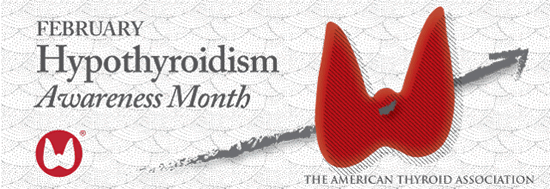
Clinical Thyroidology for the Public summarizes selected research studies discussed in the previous month’s issue of Clinical Thyroidology, an official publication of the American Thyroid Association. Editor-in-chief, Alan Farwell, MD, FACE
Available in pdf format for saving and printing and Web page format for viewing online
PDF Format for Saving and Printing
Clinical Thyroidology for the Public Volume 15 Issue 2 (PDF file, 2.77 MB)
TABLE OF CONTENTS – Web Format
HYPERTHYROIDISM .
Overt thyrotoxicosis may be a good prognostic sign in immune checkpoint inhibitor treatment
Immune checkpoint inhibitor (ICI) drugs are now standard-ofcare treatments for several types of cancer. ICI drugs help the body recognize cancer and use the immune system to attack and destroy cancer cells. In addition to attacking the cancer cells, some normal cells, such as thyroid cells, can also be attacked. In the current study, the investigators sought to characterize thyroid problems in patients treated with ICI drugs.
Muir CA et al 2021 Thyroid immune-related adverse events following immune checkpoint inhibitor treatment. J Clin Endocrinol Metab 106:e3704–e3713. PMID: 33878162.
THYROID CANCER
Minority patients with thyroid cancer are less likely to receive specialist care
Thyroid cancer is common and there are effective treatments. Management of thyroid cancer is usually done under the care of specialists. This study was done to evaluate differences in the care of thyroid cancer received by minority groups by looking at who was delivering the care, specialists vs PCPs.
Radhakrishnan A et al 2021 Physician specialties involved in thyroid cancer diagnosis and treatment: Implications for improving health care disparities. J Clin Endocrinol Metab. Epub 2021 Oct 26. PMID: 34718629
THYROID CANCER
The incidence of significant thyroid cancers remains stable while the total number increases
The number of patients diagnosed with thyroid cancer has increased significantly over the last several decades, while death from this cancer has remained consistently low. Part of this is likely due to the diagnosis of a large number of small thyroid cancers which were found when patients undergo various tests for other medical problems. This study aimed to evaluate the changes in time over the number of significant thyroid cancers that require treatment as well as the number of more aggressive thyroid cancers with worse prognostic factors.
Genere N et al 2021 Incidence of clinically relevant thyroid cancers remains stable for almost a century: A populationbased study. Mayo Clin Proc 96:2823–2830. PMID: 34736609.
GRAVES’ DISEASE
Asthmatic patients have increased risk of hyperthyroidism
There have been reports of flares of asthma caused by hyperthyroidism as early as 1944. However, whether asthma would be associated with an increased risk for developing hyperthyroidism has not been adequately studied. In this study, the authors aimed at describing a relationship between asthma and potential risk for developing hyperthyroidism.
Gau SY et al. 2021 Higher risk of hyperthyroidism in people with asthma: Evidence from a nationwide, population-based cohort study. J Allergy Clin Immunol Pract. 2021 Sep 23: S2213–2198(21)01013–8.
THYROID AND PREGNANCY
Iron deficiency in late pregnancy may be associated with low thyroid levels in pregnant women
Some recent studies linked iron deficiency with low thyroid hormone levels in the mother and the baby. The need for both iodine and iron increases during pregnancy to provide for a growing baby. This study investigated potential effect of iron deficiency on thyroid hormone levels during pregnancy in mildly iodine-deficient pregnant women.
Moreno-Reyes R et al 2021 Iron deficiency is a risk factor for thyroid dysfunction during pregnancy: A population-based study in Belgium. Thyroid 31(12):1868-1877. PMID: 34538131.
THYROID SURGERY
Does a new detection test for parathyroid glands during thyroid surgery affect hypoparathyroidism rates?
The risk of injury to parathyroid glands and the resulting hypoparathyroidism causing hypocalcemia has long been a concern during a total thyroidectomy for thyroid cancer. Near-infrared autofluorescence (NIRAF) imaging is a new technology that can help the surgeon to better identify parathyroid glands during surgery. The article discussed here is a randomized study comparing the postoperative hypoparathyroidism rates in patients undergoing total thyroidectomy with and without the aid of NIRAF technology.
Benmiloud F et al. 2020 Association of autofluorescencebased detection of the parathyroid glands during total thyroidectomy with postoperative hypocalcemia risk: Results of the PARAFLUO multicenter randomized clinical trial. JAMA Surg 155:106–112. PMID: 31693081.



